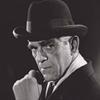Actor
Professional
Channels and Networks

William Henry Pratt, better known by his stage name Boris Karloff, was an English actor primarily known for his horror film roles.
He was born in Camberwell, Surrey and attended King's College London where he took studies aimed at a career with the British Government's Consular Service.
When I was nine, I played the demon king in Cinderella and it launched me on a long and happy life of being a monster.
In 1909, aged 22, he left university without graduating and drifted, leaving England for Canada, where he worked as a farm labourer and did various odd itinerant jobs until he happened upon acting.
His first on screen role was in a film serial, The Lightning Raider (1919) with Pearl White. He was in another serial, The Masked Rider (1919), the first of his appearances to survive.
Karloff's first major role came in a film serial, The Hope Diamond Mystery (1920).
He had acted in 80 movies before being found by James Whale and cast in Frankenstein (1931). Karloff's role as Frankenstein's monster was physically demanding – it necessitated a bulky costume with four-inch platform boots – but the costume and extensive makeup produced a lasting image. The costume was a job in itself for Karloff with the shoes weighing 11 pounds (5.0 kg) each. Universal Studios quickly copyrighted the makeup design for the iconic Frankenstein monster that Jack P. Pierce had created.
I didn’t begin my stage or my screen career with the idea of becoming a horror character but the chance which led me into that type of role has brought me the things I want and lifted me out of the rut and so long as I remain on the screen, I do not expect to deviate.
The monster was the best friend I ever had.
In 1932, he made The Old Dark House, a horror movie based on the novel Benighted by J.B. Priestley. He was loaned by Universal to MGM to play the title role in The Mask of Fu Manchu (also 1932), for which he gained top billing.
He was cast in the role of Imhotep who is revived in The Mummy (1932) and the film's success established Karloff as a huge star of horror films.
Karloff returned to England to star in The Ghoul (1933), then made a non-horror film for John Ford, The Lost Patrol (1934), for which his performance was highly acclaimed.
Universal found reissuing Dracula and Frankenstein led to success at the box-office and began to produce horror films again starting with Son of Frankenstein (1939). Karloff reprised his role, with Lugosi co starring as Ygor and Basil Rathbone as Frankenstein.
Certainly, I was typed. But what is typing? It is a trademark, a means by which the public recognises you. Actors work all their lives to achieve that. I got mine with just one picture. It was a blessing.
Horror films experienced a decline in popularity after the war, and Karloff found himself working in other genres.
In 1947, he made The Secret Life of Walter Mitty a comedy co-starring Danny Kaye. The same year he made supporting role appearances in Dick Tracy Meets Gruesome and Abbott and Costello Meet the Killer, Boris Karloff.
He appeared as the villainous Captain Hook in Peter Pan in a 1950 stage musical adaptation which also featured Jean Arthur.
Karloff returned to horror films with The Strange Door (1951), The Black Castle (1952) and Abbott and Costello Meet Dr. Jekyll and Mr. Hyde.
He made some horror films in the late 1950s: Voodoo Island (1957), The Haunted Strangler (1958), Frankenstein 1970 (1958) in which he played the mad scientist role Baron Victor von Frankenstein II, the grandson of the original creator.
Horror means something revolting. Anybody can show you a pail full of innards. But the object of the roles I played is not to turn your stomach – but merely to make your hair stand on end.
In 1963, Karloff appeared in Black Sabbath and The Raven, the latter for Roger Corman who also used Karloff in The Terror playing a baron who murdered his wife. He made a cameo appearance in Bikini Beach (1964) and had a bigger role in The Comedy of Terrors (1964) and Die, Monster, Die! (1965).
In the mid-1960s, he enjoyed a late-career surge in the United States when he narrated the made-for-television animated film of Dr. Seuss' How the Grinch Stole Christmas, in which he also provided the voice of the Grinch.
In 1966, he appeared in drag, in an episode of The Girl from U.N.C.L.E. entitled The Mother Muffin Affair in which he played the title character.
Karloff's last film was The Ghost in the Invisible Bikini (1967).
He spent his retirement in England at his country cottage named Roundabout in the Hampshire village of Bramshott.
For his contribution to film and television, Boris Karloff was awarded two stars on the Hollywood Walk of Fame, at 1737 Vine Street for motion pictures, and 6664 Hollywood Boulevard for television.
In 1998, an English Heritage blue plaque was unveiled in his hometown in London. The British film magazine Empire in 2016 ranked Karloff's portrayal as Frankenstein's monster the sixth-greatest horror movie character of all time.
To learn more about Boris Karloff click and explore any of his media channels and network links in the tool-bar above.



